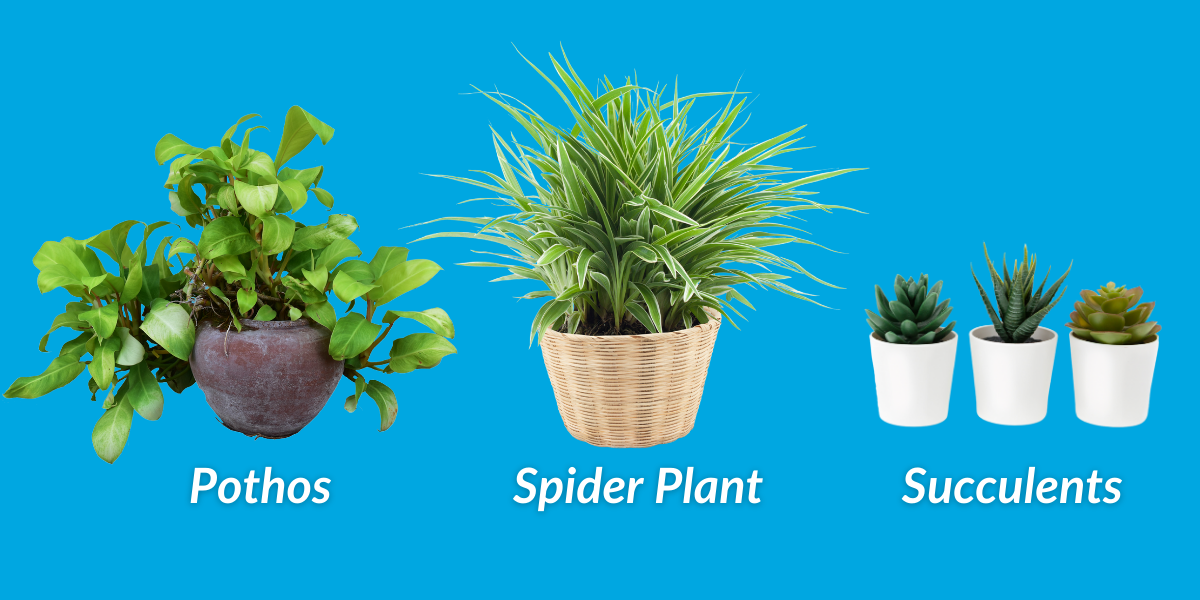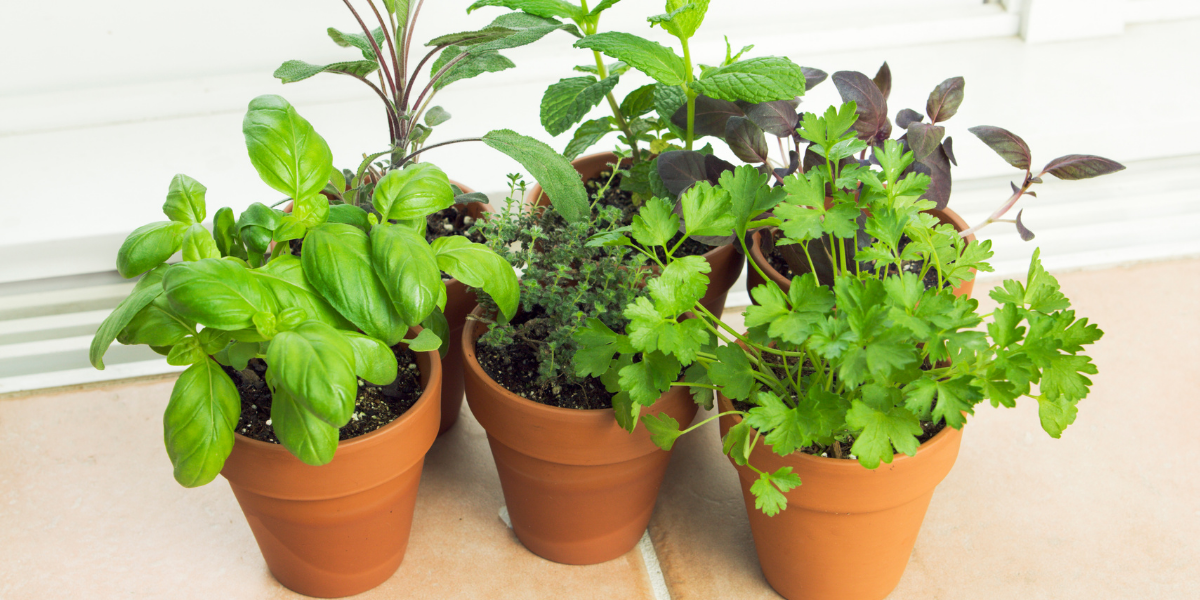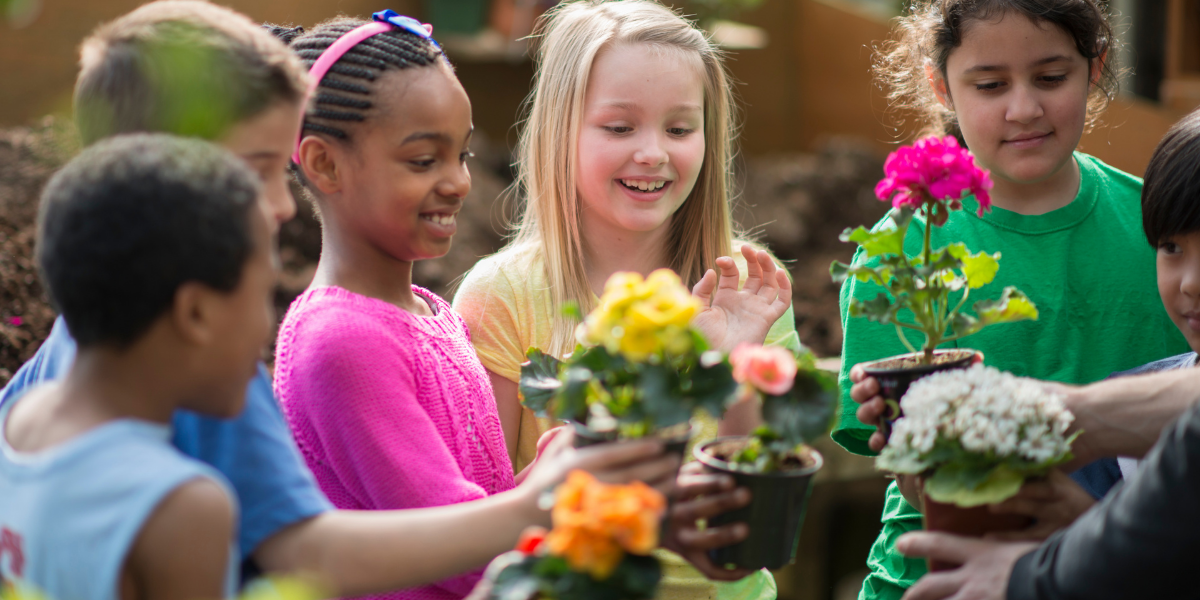Plants in the Early Childhood Classroom
Posted by AIR Childhood Training Solutions Teacher Resource Team on Mar 28th 2023
A class plant or window garden can help teach a variety of topics and enable students to connect with the world around them in new and fun ways.

One the most popular social media posts we shared in the past year offered tips for using plants in the classroom.
Since early childhood educators and child care providers like you are always looking for ways to change up their classroom design, we wanted to provide a deeper dive into creating an indoor greenspace, whether that’s a couple of pots of plants or a full-on indoor garden.
Choose plants that are easy to care for
 We’ve all been there: You want to try something new in the classroom, but you don’t want it to be stressful for you and/or the kids.
We’ve all been there: You want to try something new in the classroom, but you don’t want it to be stressful for you and/or the kids.
Set yourself up for success by being a rather picky plant shopper and choose low-maintenance and hardy specimens. This way, you won't have to worry about them dying or requiring excessive care.
Examples of classroom-friendly, resilient plants include:
Pothos
Not a green thumb? Then consider the pothos your BFF.
Long hailed as one of the easiest to care for plants, pothos can tolerate neglect (like during school breaks or long weekends) and still continue to thrive.
This is a relatively inexpensive plant that’s easy to find ar hardwood stores, garden centers and other locations. Learn more about how to care for and grow a pothos.
Spider Plants
The kids in the class will get a kick out of this plant, whose tangled web of leaves helps it to live up to its name.
Spider plants like to dry up in between waterings, so this plant will happily stay green and vibrant in a classroom during breaks, weekends professional development days.
The curly version of the spider plant is another option (but if left outside it could flower and attract bees).
Succulents
Succulents, with their unusually shaped leaves and variance in colors, are a fun way to show diversity in the biosphere.
They do not need as much water as the pothos or spider plant but do need more light. Setting these up along a windowsill is best.
The team at MyTeachingCupboard.com has a full-list of kid-friendly classroom plants.
Involve students in the care process
Involving students in caring for the plants is a great way to help them feel invested in the process and learn important skills like responsibility and teamwork.
Assign students tasks like watering the plants, checking the soil, or trimming dead leaves.
Depending on the age of your class, you can also use the plants as a way to teach basic scientific concepts, like photosynthesis or the water cycle.
Use plants to teach life cycles
Pants are a great way to teach young students about the concept of life cycles. You can start by planting seeds and watching them grow, discussing the different stages of growth and what the plant needs to thrive.
You can also use this opportunity to talk about the importance of plants in the ecosystem and how they help provide oxygen and food for animals and humans.
More than anything, however, plants help teach students about patience. Watched pots never boil, but keeping track of a plant’s growth over the school year will show that great things come to those who wait.
Depending on the plant, consider using a height chart or taking a photo of the plant each week and viewing them all at the end of the year.
Create a sensory experience

In addition to their educational benefits, plants can also help create a more engaging and sensory classroom environment.
Consider incorporating plants with different textures or scents to help engage students' senses.
You can also create a small garden area where students can explore different types of plants and interact with them.
An easy way to do this is with herbs like rosemary, thyme, basil, and cilantro. The leaves on each of these plants look very different, and each has a distinct smell.
Be sure to check in with parents first, though, about any allergies or other sensitivities students may have.
Use plants as a calming influence

Finally, plants can have a calming influence on both children and adults. Studies have shown that exposure to plants can reduce stress and improve mood.
Consider incorporating plants into a calming corner or relaxation area in your classroom to help create a more peaceful and nurturing environment.
Start planting!

t’s never too late to work plants into your childcare center or classroom. You don’t have to grow from seed, and you can always test the waters with one pothos.
Hold a contest to have students name the plant. You can also look for plants that propagate easily and offer kids and their families a clipping they can grow at home.
Related Blog Posts & Resources
Benefits of Gardening with Young Children
Gardening can be a great activity for engaging all five senses. What does the dirt feel like on their hands? How does it feel if you add water to the dirt? Read more.
Easy Design Changes to Make in Your Classroom Today to Foster Creativity
Early childhood educators have the potential to shape the ways a child thinks. In order to create tomorrow’s strong, innovative thinkers, we need to teach our kids to be creative. Read more.
Pumpkin Science!
Are you looking for fun and fresh ideas for fall activities in your classroom? We have you covered! The number one thing most people think about when thinking about fall is…PUMPKINS! Read more.

